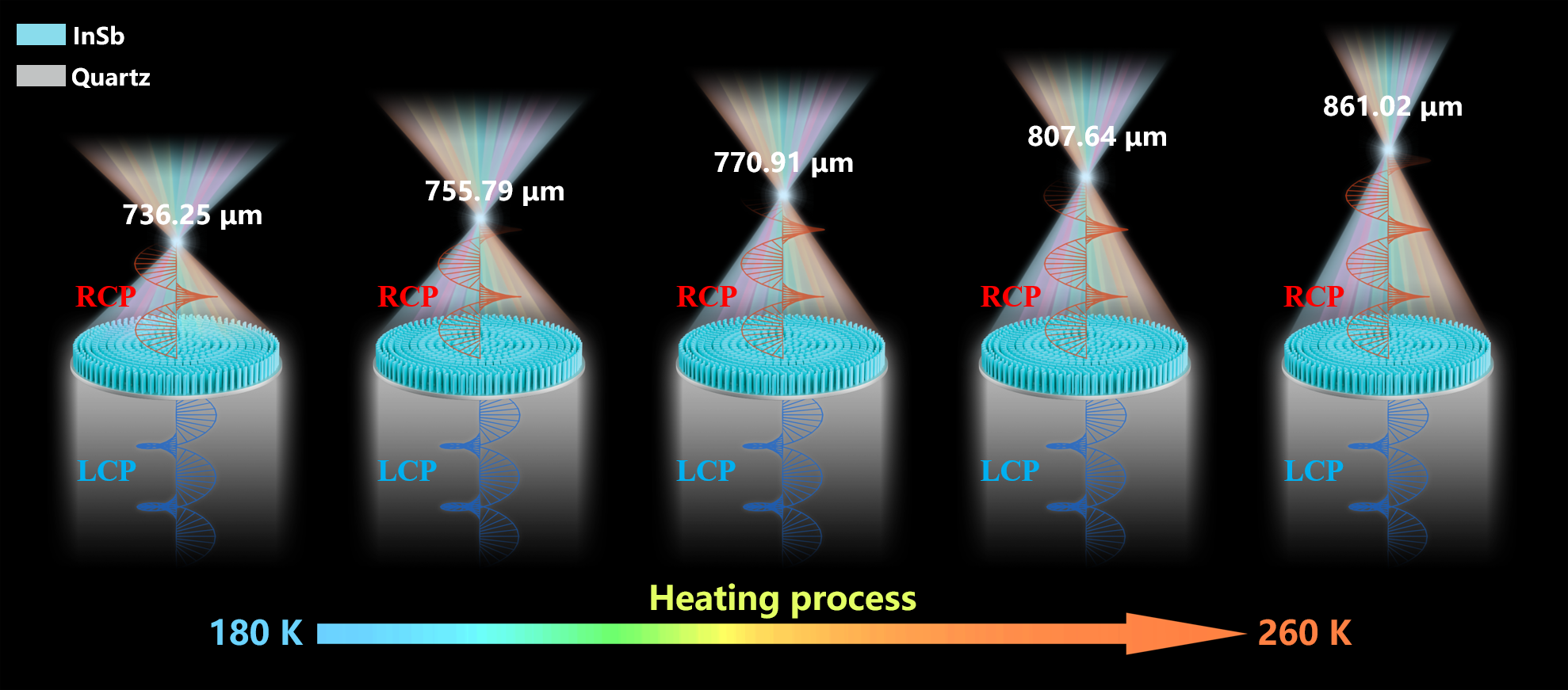Metalens, one of the most prominent applications of metasurface, has demonstrated the promising abilities to replace traditional lens. By manipulating the phase distribution of metalens composed of appropriately arranged meta-atoms, the wavefront of incidence can be arbitrarily controlled to achieve desired purposes.
Among all the fascinating implementations of metalens, broadband achromatic metalens (BAM) correcting chromatic aberration in broadband applications has gradually consolidated its position as motivating research in the past few years.
However, the proposed BAMs were limited to a single functionality, and this constraint impedes potential applications after fabrication. Specifically, the continuously varifocal metalens for broadband achromatic focusing is still a formidable challenge that has not been explored so far.
A research team led by Prof. Dr. FAN Wenhui from Xi'an Institute of Optics and Precision Mechanics (XIOPM) of the Chinese Academy of Sciences (CAS) proposed a metalens for designing tunable BAMs to address this limitation, which is called continuously varifocal and broadband achromatic metalens (CVBAM). The results were published in Journal of Science: Advanced Materials and Devices.
According to the researchers, semiconductor material of indium antimonide (InSb) with tunable responses was selected to design meta-atoms for accomplishing phase compensation required by CVBAM that has the operation frequency range of 1.8 – 2.2 THz.
The CVBAM was designed to converge the focal spots to preset spatial location over the operation frequency range. By varying external temperature, the focal length of CVBAM can be dynamically tunned from 736.25 μm to 861.02 μm, while the achromatic focusing can be maintained as well.
The proposed metalens can significantly enrich the capabilities and potential applications of current meta-devices, which may facilitate the development of THz near-field imaging and spectroscopy systems.
This work was supported by the National Natural Science Foundation of China, Natural Science Foundation of Shaanxi Province, and The CAS “Light of West China” Program.
(Available online 11 April 2023)

Fig. 1 The working principle of CVBAM. (Image by JIANG et al.)


